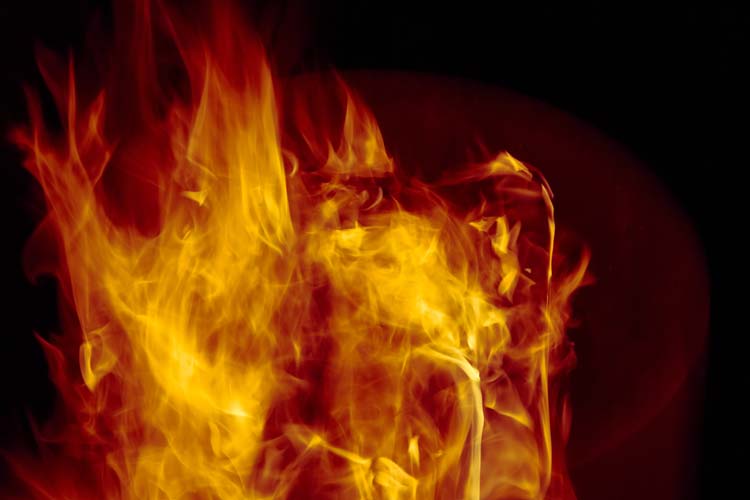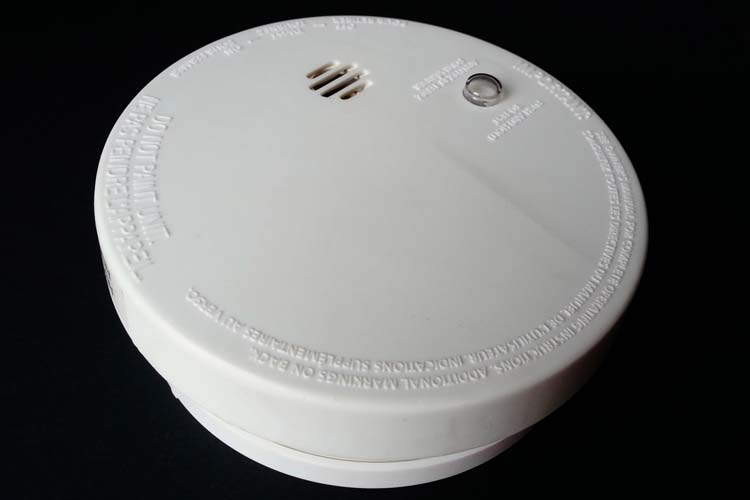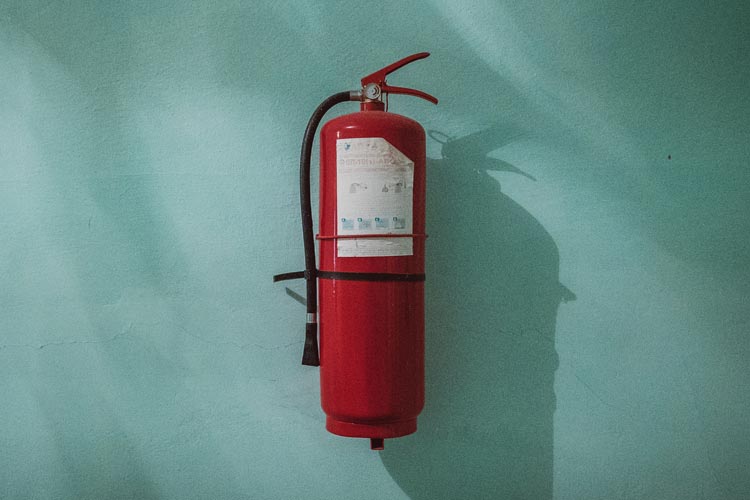You might believe that a fire or a case of carbon monoxide poisoning at your property is unlikely. But every year, many people fall victim to such tragedies in their homes. Residents who are not protected from fire or carbon monoxide poisoning have a significantly higher chance of being killed or injured in their homes.
As a residential landlord, you have a legal and moral responsibility to protect your tenants from the risks of fire and carbon monoxide. You will also wish to protect your investment in your property. So, what are the fire safety regulation for rental properties?

Fire regulations for rental properties
The fire regulations for rental properties are laid out in various pieces of legislation. Below is outline the key laws that you should be aware of and must follow as a landlord.
In addition to acquainting yourself with the current rules and regulations, it is essential to keep up to date with any changes. The government is keen to improve the fire safety of rental properties and so the regulations may be revised from time to time. Changes can be triggered by a particular incident or as a result of a general review. Regulations may be imposed nationally, regionally or locally.
If you fail to keep up with changes to the appropriate legislation and adhere to the rules, you could incur a significant fine. An injury to, or the death of a tenant could result in a custodial sentence and you would have to live with the knowledge that you did not fulfil your obligations.
Furniture and Furnishings (Fire Safety) Regulations 1988/1989, 1993 and 2010
These rules are particularly relevant if your property is let to tenants furnished. Landlords must ensure that all of the furniture provided is “fire resistant”. Furniture should display a permanent label to show that it meets the specified ignition resistance levels. This label should be displayed on both new and second-hand furniture.
The regulations apply to things like sofas, sofa beds, mattresses and even bean bags. Items such as carpets, curtains and duvets are not included.
When making periodical inspections of your property, it is a good idea to check that your tenant has not taken these labels off for any reason or replaced items without you knowing. Record any changes in the inventory.
One of the reasons that an accurate inventory is particularly important is so that if a fire were to break out because of something a tenant had added that wasn’t safe from a fire perspective, you could prove that it wasn’t your fault.
The Housing Act 2004
The Housing Act 2004 together with the Housing Health and Safety Rating System (HHSRS) lays out the main requirements for fire safety in rental accommodation. In particular, landlords must ensure that tenants can escape easily in the case of a fire as well as make repairs to the fabric of the property (such as ceilings) in a timely manner, so fire can’t spread quickly to other rooms.
The Smoke and Carbon Monoxide Alarm (England) Regulations 2015
The current regulations in England for single occupancy homes require private sector landlords to install at least one smoke alarm on every floor and a carbon monoxide alarm in any room with a fuel-burning appliance, such as a wood-burning stove.
This is the minimum requirement; you may choose to install additional alarms in your rental property. The few seconds that other alarms might save when tenants need to escape, could be the difference between life and death.
The alarms you install should be audible throughout the entire property and must be positioned to maximise their capacity to pick up smoke.
You are obliged to ensure that the alarms are in proper working order at the start of each new tenancy. However, you are not responsible for testing the alarms during the tenancy.
For their own safety, your tenants should check the alarms at least once each month and replace the batteries once or twice a year, if the alarms are battery-powered. They should report any issues with the equipment to you or to your letting agent as soon as possible.
Long leases or tenancies granting occupation for seven or more years, and accommodation shared with you, the landlord, are exempt from the regulations.

The Regulatory Reform (Fire Safety) Order (2005)
The fundamental requirement under the Regulatory Reform (Fire Safety) Order 2005 is that the responsible person for a multi-occupied residential building (usually the landlord) must carry out and maintain a suitable and sufficient fire risk assessment for communal areas to make sure precautions and procedures are in place to protect the occupants in case of fire. It only applies to shared communal areas, such as shared kitchens or hallways in a block of flats; it does not apply to individual flats themselves.
Landlords of multi-occupied properties can carry out this risk assessment themselves or hire a third-party Fire Risk Assessor.
The main requirement is that communal areas such as landings, stairways and kitchens are kept clear of combustibles so that people can escape quickly and the risk of fire in the escape routes is mimimised.
Practically, this can be hard to enforce because your tenant may not follow the rules. The best thing you can do is explain the fire safety requirements to them and put something in writing, this enables you to prove you have done your best to ensure communal areas are kept free of fire risks and hazards. It would be best if you also carried out periodic risk assessments of communal areas.
Other Related Legislation
Electrical Equipment (Safety) Regulations 1994
Many accidental domestic fires in the UK are caused by electricity and faulty electrical products.
Landlords must ensure that the electrical systems and electrical appliances supplied are safe. All electrical equipment provided must be marked with an appropriate CE symbol.
Electrical Safety Standards in the Private Rented Sector (England) Regulations 2020
Landlords must have the electrical installations in their rented properties inspected and tested by a qualified and competent person at least every 5 years. A report should be obtained from the person conducting the inspection and a copy supplied to the tenant.
This new legislation came into force on 1 June 2020 and applies to new tenancies from 1 July 2020 and existing tenancies from 1 April 2021.
Gas Safety (Installation and Use) Regulations 1998
All gas appliances and chimneys/flues must be safety checked annually by a qualified Gas Safe registered engineer.
Building Regulations
If you are refurbishing a property before letting it out, it is your responsibility to ensure that the latest fire safety rules set out in building regulations are adhered to.
Fire safety in flats
If you own a flat, then it is your responsibility to carry out all the necessary checks for the flat itself. However, if you own a whole block of flats, you will have responsibility for the communal areas as well as the internal space within each property. In this case, you must ensure that someone is responsible for the overall fire safety in your block of flats and that you know what precautions they are taking.
As a landlord of one flat or a block, you must make sure the front doors comply with fire safety regulations. Including fitting self-closing devices, ensuring the door is fire-proof and that any paint used is also fire retardant.
Fire Safety in Houses in Multiple Occupation (HMOs)?

Houses in Multiple Occupation (HMOs) will have enhanced fire safety rules. These will differ between local housing authorities so you could seek their advice on the regulations that apply to your property.
With HMO’s the risk is much higher as there are lots of people living together who may not know each other. You should do everything you can to protect your property and tenants.
This should include:
- Ensuring all exits are clear from obstructions
- Providing a fire extinguisher on every floor of the property and a fire blanket in every shared kitchen
- Installing mains powered fire alarms, smoke detectors and heat detectors throughout the property and making sure they are in good working condition
- Clearly marking all fire exits and making sure instructions on what to do in case of a fire are displayed on the walls in the communal areas
- Having annual gas safety checks
- Making regular checks of the electrics and electrical appliances you provide (at least every 5 years)
- Ensuring furniture meets fire safety regulations
- Fitting fire doors where required
Summary
The overriding principle of all this legislation is to ensure that landlords have done everything that could reasonably be expected to protect their tenants.
In order to properly protect your tenants and your property, you should consider the safety standards required by law to be the minimum that you achieve. Conduct your own risk assessments or engage an expert to do this for you and then go the extra mile with your smoke detectors, fire alarm system and carbon monoxide detectors. Don’t wait for a tragedy to occur, act now!




